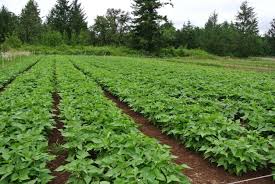Bean farming is a common practice, especially in Kenya. A bean is a seed of several plants in the family of Fabaceae which are used as vegetables for human or animal consumption. Beans are also very important food crops in Kenya.
Why is bean farming important?
Beans provide protein, fiber, folate, iron, and potassium-containing little or no fat, sodium, and cholesterol.
- Protein is an important nutrient that helps in maintaining and repairing the body. Lack of protein in the human body may lead to kwashiorkor.
- Fiber also helps in reducing the chances of constipation.
- Beans they can also be sold for income by the farmers.
Ecological requirements for bean farming.
Many times beans are grown on a wide range of soils. However, they do well in well-drained loam soils which mostly they are rich in organic matter. Since beans cannot tolerate waterlogged soils, good drainage is therefore very important. They require moderate rainfall since heavy rain will cause destruction at the flowering stage.
Varieties
There are different varieties of beans that are grown in Kenya. Some of these Varieties are:
- Rose coco (GLP2)
- Mwezi moja(GLP1004)
- Canadian wonder(GLP24)
- K74
- Mexican 142–It was developed in Tanzania and I suitable for canning.it is drought tolerant, rust resistant, high yielding, and also early maturing rate.
Selection and Preparation of Planting Materials.
Beans are established from seeds and the seeds should be dried before they are planted. The selection should be done in order to do away with the damaged ones. Seeds inoculation with the right strain of rhizobium should be encouraged.
Land preparation for bean farming

They do not require a fine seedbed since they do not have large seeds and therefore any seedbed suitable for maize is also applicable for beans.
Field Operations
- Planting- They should be planted at the start of the rains except during long rains. Planting is done by placing 2 or 3 seeds per hole. Spacing is 30 to 45 ×15 cm. It can also be done in shallow furrows.
- Weeding- It should be done before flowering to avoid knocking down flowers. It is done when the field is dry to avoid spreading diseases. Hand weeding is also practiced.
Pest and disease control
- Pest- In order for beans to produce high-quality products, pests should be controlled. Some of the common pests include:
- Bean aphid
- Spotted borer
- American bollworm
- Bean fly
- They are controlled by spraying the crop with various insecticides such as formation and dieldrin.
- Diseases- Some of the diseases which attack beans include:
- Bean rust
- Halo blight
- Anthracnose
- Angular
Harvesting
There should be no rain during harvesting so as to avoid rotting and sprouting of beans. Beans are harvested by uprooting the dry plants. However, uprooting is suitable in the morning since the weather is cool to minimize the amount of pod shattering. When the uprooted plants are dry enough, they are crushed with sticks so as to remove seeds from pods. After winnowing, sorting is done so as to remove the damaged seeds.
- Elizabeth Hopkins Bio, Wiki, DC Now News, Age, Education, Family, Children, Husband, Net Worth, and Career
- Uhuru Kenyatta biography, presidency net worth.
- Venita Aspen age, children, husband, southern charm, net worth.
- Justin Cheung age, wife, children, movies, career, net worth.
- John Marshall Bio- Age, Family, wife, children, career.
- Steve Harrigan Bio-Age, Edu, Wife, Children, and Career
- Alexis Rivas KNSD, age, family, children, husband, net worth.
Marketing
This is done through the agents of the National Cereals and Produces Board.
- Mount Kenya University history, fees, courses
- Best Public High Schools in Kiambu County.
- List of Accredited Private Universities in Kenya
- A list of special secondary schools, and contacts.
- How is The Lenana Boy school and location?
- List of best private primary schools in Kirinyaga County.
- Public Universities in Kenya